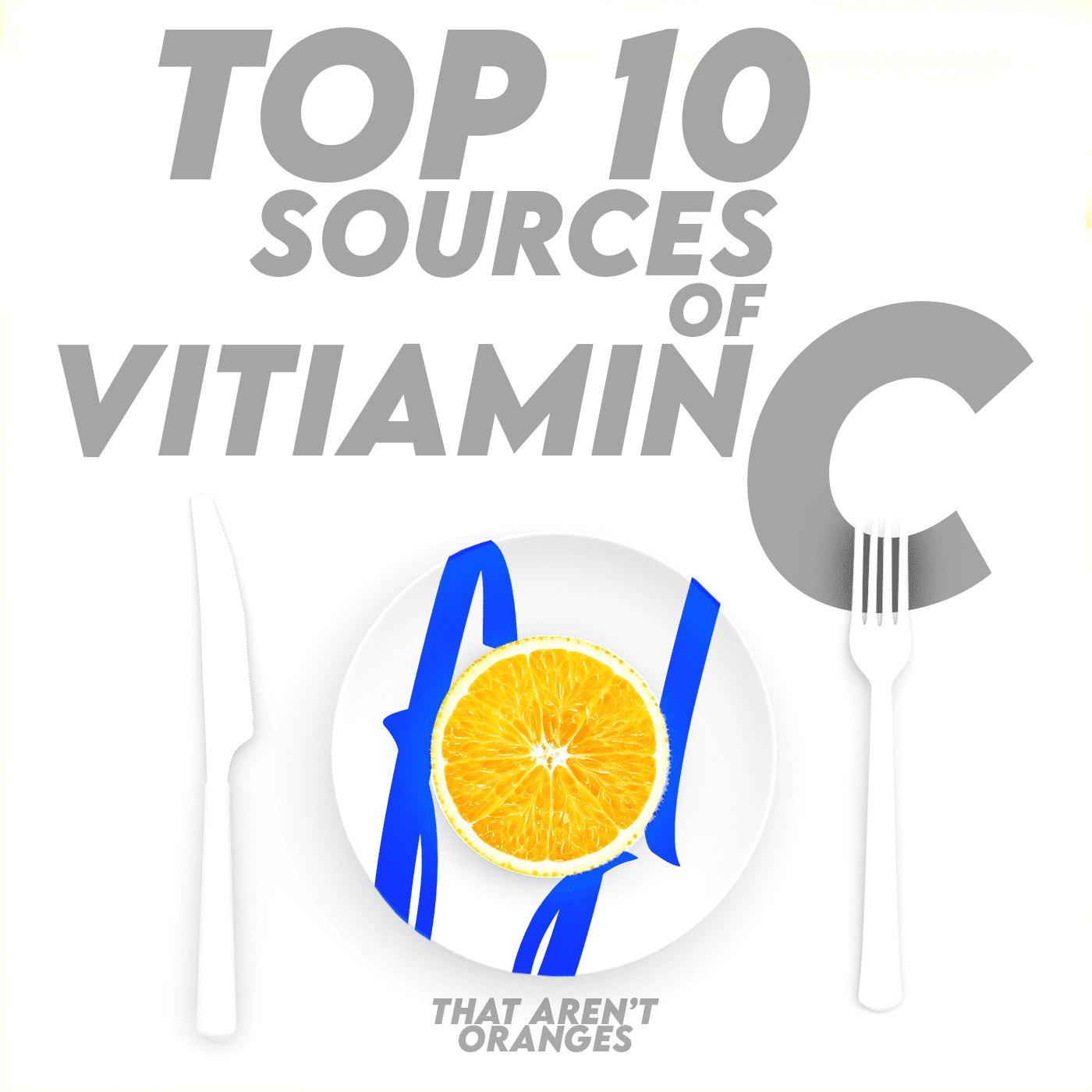With winter upon us and the current COVID climate, we are all looking for ways to keep our bodies healthy and strong. Vitamin C is commonly sought after in these cooler months and with some merit! Although research may contradict its use in preventing illness such as the common cold, there is research to support its role in collagen (a connective tissue) production needed to support our immune system. It may also play a role in reducing the severity of symptoms for those with the common cold! So, what should I be serving up to my family to ensure these Vitamin C needs are met?
When someone says Vitamin C, the first thing that pops to mind is a good ol’ juicy orange! However, is an orange really the best source of it? Well, we have collated a list of ten foods which have as much, or in some cases more, Vitamin C than a standard orange, which contains approximately 70mg.
Top Sources of Vitamin C
Vitamin C is essential in the growth and repair of tissues, including a role in wound healing, and assists in iron absorption in the body. Based on the Australian Guidelines, the Recommended Daily Intake (RDI) of Vitamin C is 45mg/day. So, how can we achieve this? Well, this is, in fact, pretty simple if including a variety of fruit and veggies, such as the following:
-
Yellow Capsicum
Yellow capsicum is a Vitamin C powerhouse, packing up to 340mg of per cup; that is over 7 times the amount we need! Try yellow capsicum in salads, homemade rice paper rolls or in a salad wrap.
-
Red Capsicum
Not far behind its yellow family member, a medium red capsicum again, smashes our requirements out of the park, containing 190mg. Just like yellow capsicum, red capsicum is a great addition to salads, homemade rice paper rolls or in a salad wrap!
-
Kiwi Fruit
These little green delights also knock your intake out in one hit, with two small kiwi fruits, containing nearly 140mg! Try kiwi sliced on your brekkie or yoghurt, in a smoothie or on the go as a sweet snack.
-
Strawberries
Who doesn’t love strawberries? This sweet red fruit is another great source, containing 90mg per cup. They make a delicious addition to your morning cereal, in a summer salad or served fresh as a snack.
-
Broccoli
These little green trees are a great addition to a stir fry, grated into veggie fritters or served alongside your favourite protein, with the bonus of containing approximately 90mg of Vitamin C per cup!
-
Papaya
Papaya is a tropical fruit delight, best enjoyed on a hot summer day, in a smoothie or served with some delicious yoghurt, while providing 90mg Vitamin C per cup.
-
Kale
Although not everyone’s favourite, kale’s nutrient density cannot be denied, containing approximately 80mg Vitamin C per cup! Try it finely diced in a salad, sautéed in an omelette or baked to form kale chips!
-
Brussels sprouts
Your mum did always preach the importance of eating your Brussels sprouts, which provide 75mg per cup! Try sautéed or roasted with extra virgin olive oil.
-
Grapefruit
This pretty pink fruit packs 72mg per cup! Delicious in a smoothie, diced with some yoghurt or enjoyed fresh for a refreshing snack.
-
Snow Peas
Another green veggie which packs more than your daily intake in just one cup (54mg/cup)! Enjoy raw with dip as a snack, in a stir fry or a fresh salad!
Does Cooking Impact the Vitamin Content?
Vitamin C is a heat-sensitive, water-soluble vitamin, meaning the content of it will decline pending the cooking method chosen. Steaming and microwaving vegetables retains the highest level of Vitamin C, due to less contact with water at relatively low temperatures (Lee et al., 2017). The shorter the cooking time, the lower the temperature cooked at and reduction in water contact are three factors which will assist in retaining Vitamin C content (Lee et al., 2017). Better yet, serving such foods in their raw form will ensure more of the Vitamin C content is preserved.
Vitamin C content also decreases the longer it is stored, so consuming fruits and vegetable when fresh will increase their nutrient value!
As you can see, a number of fruits and veggies are just as good, if not better in terms of Vitamin C content compared to a standard orange! It is also important to consider how we are preparing these foods, to ensure the nutrient content is retained; aim to serve fresh where possible and steam or microwave when serving warm.
Looking for other fun nutrition information? Head to our website to get in touch with one of our incredible dietitian’s today!








My Wife and I have been taking 1500mg tablets of Sugarless Vitamin C for a number of years we are both in our mid 70s unfortunately I am not allowed to drink fresh orange juice due to its sugar content ( as I have diabetes) but we are both very well and never get a cold of flu
Hi Peter! Great to hear you have managed to keep your Vitamin C up whilst being unable to drink fresh juice. Everyone’s requirements are a little different and as dietitians, we understand the importance of tailoring the approach to each person’s individual needs. Thanks for commenting!
Wow! I found this so interesting. I just completed my nutrition degree and had no idea that these food sources were so high in Vit. C.